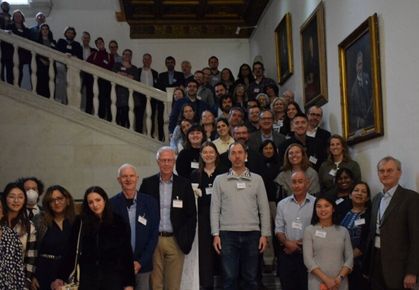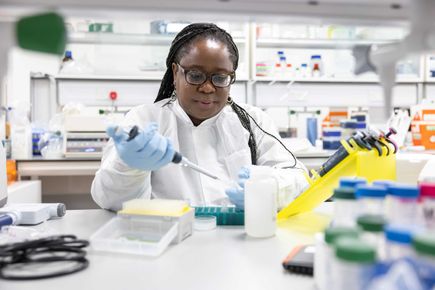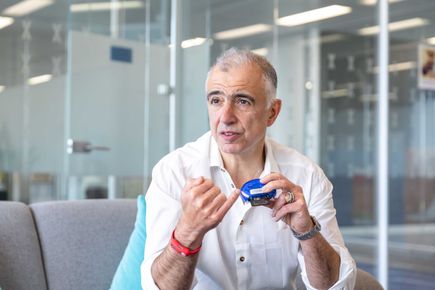Imperial researchers and technologists are contributing to the development of novel technologies that will transform how we diagnose infection . Imperial researchers cover the spectrum of diagnostic development, from early-stage sensors through test production and validation in the laboratory and the clinic. This vital work is facilitated by the access to clinical samples which can be confirmed virologically.
Particularly relevant for pandemic preparedness is that many of the technologies emerging from Imperial include devices or tests that can: 1) be used at the point of care (including in local healthcare settings or in low resource settings/countries) or even at home (think the LFT tests that transformed the COVID-19 pandemic response), 2) be quickly adapted for the detection of new pathogen threats, and 3) are cheap enough to be deployable globally. These include the PCR tests and LFT tests, similar to those that transformed the COVID-19 pandemic.
Experts working in this area
- Professor Rosemary Boyton: New diagnostic assay to measure T cell immunity against key pathogens of interest using a rapid test.
- Professor Rafael Calvo: Design systems, behaviour analytics, communication, ethics.
- Professor Graham Cooke: Evaluation of rapid diagnostics; DNA Nudge.
- Professor Pantelis Georgiou: Point of care diagnostics, including Lacewing and Dragonfly (ProtonDx).
- Dr Malick Gibani: CovidNudge: A novel, lab-free, point-of-care test for SARS-CoV-2; Development of a real time PCR assay for the detection of Salmonella typhimurium bloodstream infection
- Professor Nick Grassly: Rapid diagnostics, e.g., poliovirus surveillance.
- Dr Firat Guder: Disposable silicon-based micro-qPCR for rapid Detection of pathogens (TriSilix); low-cost wearable devices for diagnostics of highly infectious pathogens, including COVID-19.
- Professor Stuart Haslam: Diagnostic development via the GlycoCell Engineering Biology Mission Hub.
- Professor Alison Holmes: Handheld point of care system for rapid detection of SARS-CoV-2 extracted RNA in under 20 minutes (read publication).
- Professor Cecilia Mattevi: Nanotechnology solutions for infection, including self-disinfecting surfaces (e.g. for masks/air-filter devices), drug delivery, diagnostics.
- Dr Nick Moser: Lacewing and Dragonfly (ProtonDx).
- Dr Michela Noseda: Using multiomics approaches to define new diagnostic/prognostic markers.
- Professor Peter Openshaw: Mucosal sampling and correlates of protection.
- Dr Talya Porat: Human factors, human-computer interaction, usability and cognitive engineering. Example: Digital Diagnostics for Africa (DIDA) network for developing new diagnostic tools for infectious diseases.
- Dr Anna Reed: Respiratory and transplant medicine. Precision diagnostics, for injury to the lung, e.g., in Chronic Lung Allograft Dysfunction.
- Dr Jesus Rodriguez Manzano: Lacewing and Dragonfly (ProtonDx). Example (in Covid): Handheld point of care system for rapid detection of SARS-CoV-2 extracted RNA in under 20 minutes (read publication).
- Dr Antonis Sergis: Laser optics and software to study aerosol generation; Sampling of aerosols to determine presence of contaminant compounds.
- Professor Shiranee Sriskandan: Host gene signature-based diagnostics; biomarker identification. In Covid (example): 3-gene signature to distinguish COVID-19 and other viral infections in emergency infectious disease presentations (read publication).
- Professor Chris Toumazou: DNA Nudge: Rapid RT-PCR test for COVID-19, which gives results in 90 minutes.
- Professor Helen Ward: Evaluation and co-design of home self-testing using lateral flow devices.
- Dr Elizabeth Whittaker: PREVAL: identification of genetic mutations which predispose to severe paediatric inflammatory multisystem syndrome (PIMS/MISC) and prognostic signatures.
- Professor Fang Xie: Nanotechnology to develop highly sensitive coronavirus testing and diagnosis.



